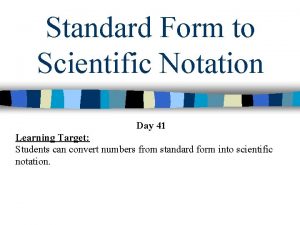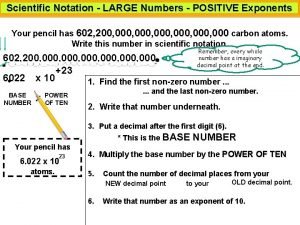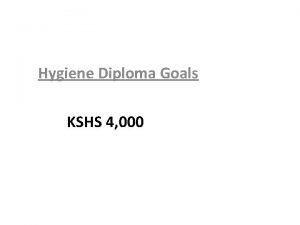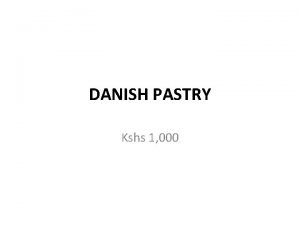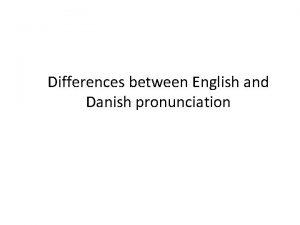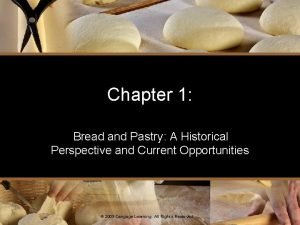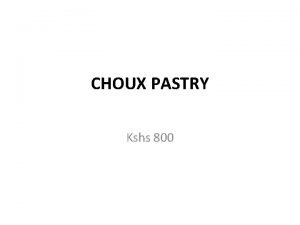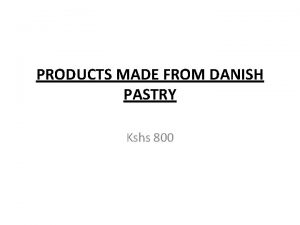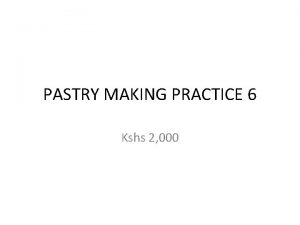DANISH PASTRY Kshs 1 000 DANISH PASTRY This






- Slides: 6

DANISH PASTRY Kshs 1, 000

DANISH PASTRY This Chapter covers the competencies required to produce Danish pastry products. It involves objectives, methods of making Danish pastry, Products made from Danish Pastry, selection and role of materials, Processing of Danish Pastry products, Baking temperatures. It also has test questions at the end of the chapter. OBJECTIVES: • At the end of this Chapter, the learner will be able to: Ø Describe the various methods used for making Danish Pastry • French Method • English Method Ø List down the various products made from Danish Pastry Ø Describe the Process of manufacture of these Danish Pastry Products Ø State the correct baking temperatures of Danish Pastry products

METHODS OF MAKING DANISH PASTRY Danish pastries are produced in much the same way as puff pastry (English or French method). The main differences are: Ø The dough is sweeter and richer often containing egg. Ø Yeast is added to the dough. Ø Butter or special pastry margarines are used for laminating. Ø Only three half turns are given to the pastry. Ø Danish pastries need to be proved before being baked. Ø Danish pastries benefit from being retarded overnight. The English or French Method of folding is used for Danish Pastry as used in Puff Pastry production. It gives three half turns. Half Turn: A half turn is where the paste is sheeted to a rectangle and folded into three.

RECIPE: Ø Flour – 1 Kg Ø Cold Milk – 570 ml Ø Castor sugar – 100 gms Ø Yeast – 100 gms Ø Shortening – 30 gms Ø Salt - 5 gms Ø 3 shell Eggs (140 ml) Ø Butter, Pastry Margarine or pastry fat – 900 gms

METHOD; Ø Mix the whole of the ingredients except the butter or pastry fat to a clear dough Ø Manipulate the butter, pastry margarine, pastry fat or a blend of these to produce a homogenous mass Ø Pin out the dough Ø Enfold within it the prepared butter as with puff pastry Ø Pin out and brush off the loose flour Ø Fold in three Ø Pin out again quite thinly to form a large rectangle Ø Fold this in two Ø Without any resting period pin out the pastry once again Ø Fold in three

Summary: Ø Three folds Ø Two folds Ø Three folds Ø The paste should be worked off at once and should not be allowed any resting periods until it reaches the prover Ø It should be kept cold at all stages until it reaches the prover
